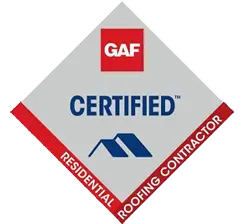Oklahoma residents are all too familiar with the havoc wreaked by high winds. Nestled in the heart of tornado alley, our state contends with fierce storms that can batter homes with intense gusts, sometimes exceeding 110 miles per hour. It’s a common sight to find ourselves retrieving patio furniture, trampolines, and even downed tree limbs after these tempests, all before assessing any potential roof damage.
Understanding which roofing materials can endure Oklahoma’s formidable winds is crucial for safeguarding your home. Here are answers to common queries to help you fortify your home against high wind damage.
Best Roofing for High Wind Storms
Modern roofs, particularly those recently installed, boast wind resistance of up to 90 miles per hour, with select materials rated for up to 150 miles per hour. This high-performance option is ideal for homeowners prioritizing protection against wind and tornadoes. However, even winds as moderate as 50 miles per hour can inflict damage, especially on older or improperly installed roofs. After each major storm, it’s prudent to visually inspect your roof for any signs of damage, regardless of wind velocity.
Which Roofing Type Offers Superior Resistance to High Winds?
Fiberglass and clay shingles stand out as robust choices for weathering high wind storms. When installed correctly, numerous options boast a rating of 150 miles per hour. Yet, these materials aren’t without drawbacks; clay shingles can sustain damage or dislodge during high winds, posing potential hazards.
For unparalleled durability, metal roofing emerges as a top contender, capable of withstanding high winds throughout its lifespan. Featuring fewer seams and overlaps compared to other roofing materials, metal roofs offer minimal entry points for wind and water, making them ideal for wind-prone areas. Most metal roofs boast a rating of 150 miles per hour.
What Roof Shape is Best for High Wind Storms?
Optimal wind protection is achieved with a hip roof, characterized by four slopes pitched ideally at around 30 degrees. Greater slope counts contribute to enhanced wind resistance, making roofs with more than two slopes, like a hip roof, particularly resilient against high wind damage.
Assessing Your Roof’s Condition After High Wind Storms
Have recent spring storms taken a toll on your roof? Concerned about loose shingles or potential damage from high winds? Reach out to GoldenRite Roofing and our experts will conduct a thorough inspection. As always, we provide complimentary inspections and estimates to assess any storm-induced damage.





